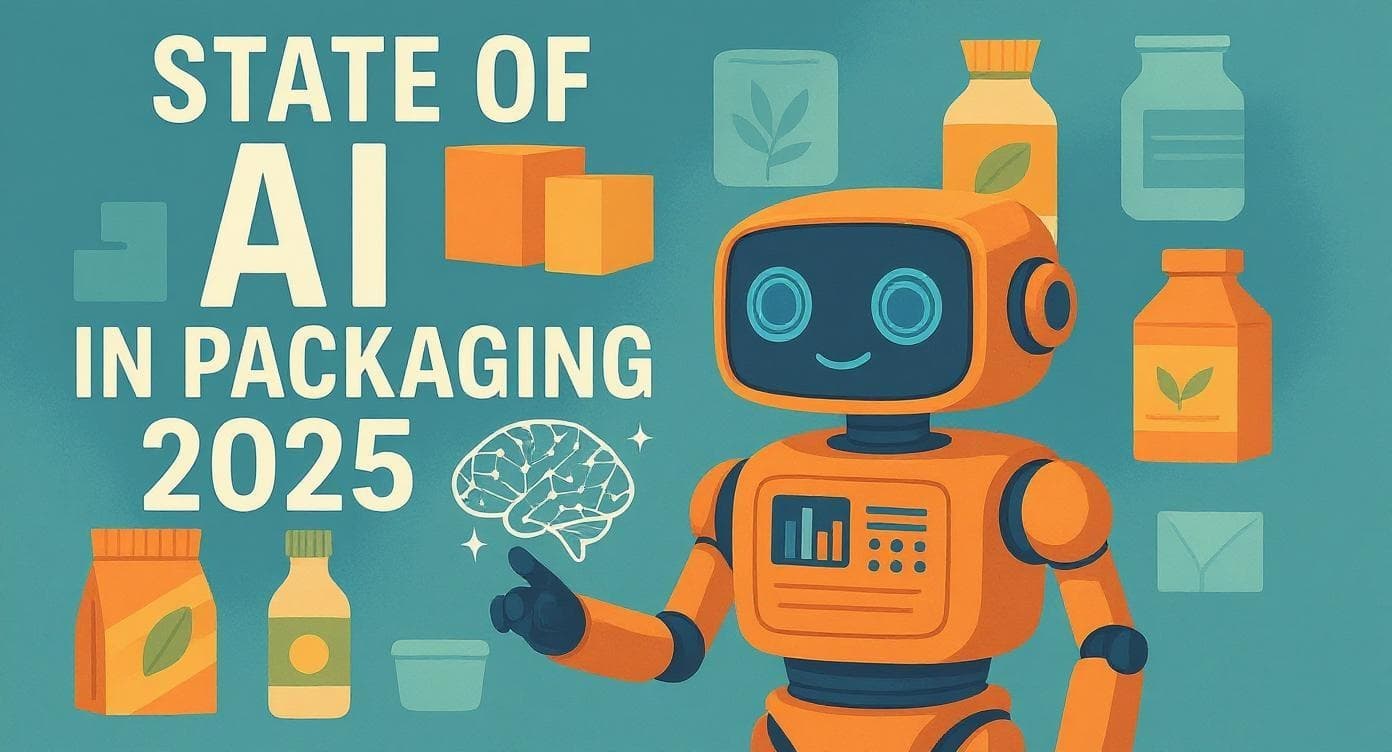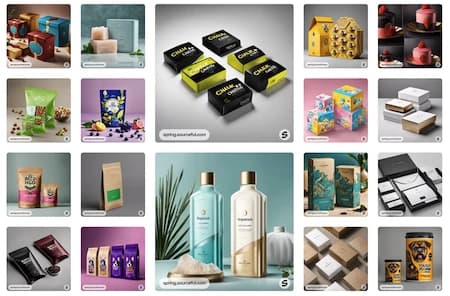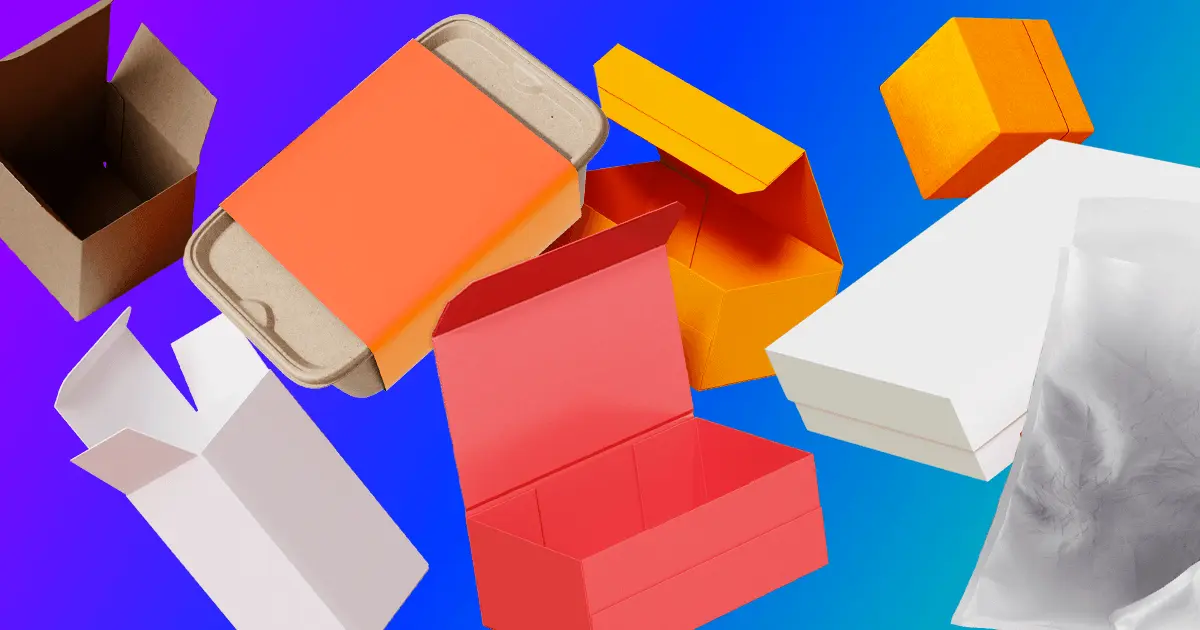Blog PostHow to reduce packaging waste (7 simple ways)
- Sustainability
- Design
- Customer Experience
Rachel KevernJuly 24, 2023 - 5 min read

Whether you’re running a business or running to the supermarket, you’ll know that we’re surrounded by packaging. And that the waste generated from packaging and other products is a serious, global problem.
The good news is that things are changing. There’s a huge customer demand for more sustainable products and businesses are striving to meet it. So, whether you’re on the buying or selling side of the equation, here’s a list of seven simple ways you can reduce your packaging waste.
3 ways to reduce packaging waste (for businesses)
- Optimise your packaging design
- Design for reuse and recycle
- Improve your supply chain
1. Optimise your packaging design
Reducing waste can start before your packaging has even been created — at the design stage. You want to make sure you use just enough materials to protect your product and nothing more.
For starters, this means thinking about your product’s shape and size. Can you reduce your packaging dimensions so that it fits more snugly? Packaging that’s the right size means using fewer materials and creating less waste. It also means less empty space, so you can ditch any excess cushioning, like polystyrene inserts or air pillows. And you can ship more of your product in one go, reducing transport emissions.
Whilst we’re talking about reducing excess, think about where else you can optimise your design. For example, could you avoid using ancillary (supporting) materials like sleeves, without affecting your packaging’s performance? Or could you reduce the amount of tape you’re using to seal your boxes by switching to a self-locking crash lock box?
Eliminating air and unnecessary materials can go a long way toward reducing your packaging waste. And if you’re unsure where to start, why not work with our team of experts? They can show you how redesigning your packaging can reduce your waste and even your costs.
2. Design for reuse and recycle
So you’ve optimised your packaging design to reduce waste. Now you can think about what happens to it after it’s been used. This is where recycling comes in. To design more sustainable packaging, use materials that are widely recyclable. Paper and card, for example, are easy to recycle, with a recovery rate of around 70% in the UK.
But recycling isn’t your only option. You can also design your packaging for reuse. This can be as simple as including a double peel and seal strip so that your customers can make returns without having to buy new packaging. You could also offer refills, where customers send back their empty packaging and get their products replenished. This has the added bonus of generating loyalty to your brand. Cosmetics retailer Lush is a great example of a successful refillable packaging scheme in action.
Overall, recyclable and reusable packaging means you can keep materials out of the waste stream for longer, whilst reducing your need for virgin materials: a win-win.
3. Improve your supply chain
Optimising your supply chain means taking a closer look at the stages your packaging goes through before it reaches the customer. And this extends beyond the design possibilities mentioned earlier. For example, an overlooked area in your supply chain might be transportation. You could reduce waste here (emissions and space) by consolidating shipments. This could also save you money on shipping costs.
Another way to reduce supply chain waste is by making sure you're shipping products in the right-sized packaging. We won’t call anyone out, but social media is rife with photos from frustrated customers who've received a hand-sized product in a box fit for a small child. In fact, the average box is 40% too big for its contents. This wastes materials and makes shipping less efficient — and means you pay more.
So, make sure you’ve always got a supply of the right-sized boxes to avoid shipping waste space.
4 ways to reduce packaging waste (for consumers)
- Use reusable items
- Choose loose and buy in bulk
- Look for climate-conscious packaging
- Communicate and collaborate with local stores
1. Use reusable items
We’re talking shopping bags, water bottles and your portable mug for that essential first cup of coffee. Every time you use your own reusable items, you’re saying no to single-use packaging. And there are plenty of businesses encouraging this, whilst generating brand loyalty at the same time. Like Costa Coffee, where using your reusable mug can get you a free drink in half the number of visits it would usually take. And who doesn’t love free coffee?
The great thing about reusable items is that they can last years with the right care. And with so many stylish, convenient and affordable options available, there’s no reason not to switch to reusable.
“‘It’s just one straw,” said 8 billion people.’ (source unknown)
2. Choose loose and buy in bulk
Pre-packaged goods can save you time during your supermarket dash. But, if you were to pile up all that when you got home, you might wonder if the convenience is worth all the waste. Instead, choose loose items you can carry yourself or in reusable bags. Not only does this help to reduce packaging waste, but it also means you only buy what you need, so you can avoid wasting food too.
And nowadays, the fruit and veg aisle isn’t the only place you can buy loose products. Supermarkets around the UK are installing refill stations for goods like nuts, pasta and even laundry detergent. So, you can also choose to buy non-perishable goods in bulk, saving you yet another trip to the supermarket and the emissions that come with it.
3. Look for more sustainable packaging
If you’ve got multiple brands selling the same item, go with the one with less packaging. And when packaging is unavoidable, choose the one that’s recyclable.
If there’s no recyclable option, you might even leave that particular product on the shelf. You’ll be amazed at what you can do without when you shop with a more sustainable mindset.
4. Collaborate with local stores
If you’re frustrated that your local businesses aren’t taking steps to reduce waste, tell them. Use customer satisfaction surveys or speak with community groups or your MP to express your opinion. You could even start your own petition and send it to members of your community to show that your ideas have public support.
When businesses know that the demand for more sustainable products and practices is there, they’re more likely to commit to changing.
Reduce packaging waste with Sourceful
Packaging waste is a major global problem that affects everyone. But there are simple steps you can take to reduce it. If you're a business owner, you can make a difference by optimising your packaging design, designing for reuse and recycling, and improving your supply chain. For consumers, bringing reusable items, choosing items with the least amount of packaging and demanding more sustainable options can be really impactful.
Here at Sourceful, we help brands switch to packaging that's more sustainable than traditional alternatives. Whether you’re looking for a responsibly-sourced mailer box or a recycled mailer bag, we’ve got a solution for you.








